Different system options for kitchen exhausts
There are several different options for kitchen exhaust systems, so it's important to be careful when choosing the right fan. On this page, you will find instructions for different kitchen exhaust systems and how to choose the right one. In a housing cooperative, it's advisable to confirm the selection of the appropriate kitchen exhaust system with the property manager. The compatibility of the exhaust fan should always be checked separately with the manufacturer.
Built-in own fan motor
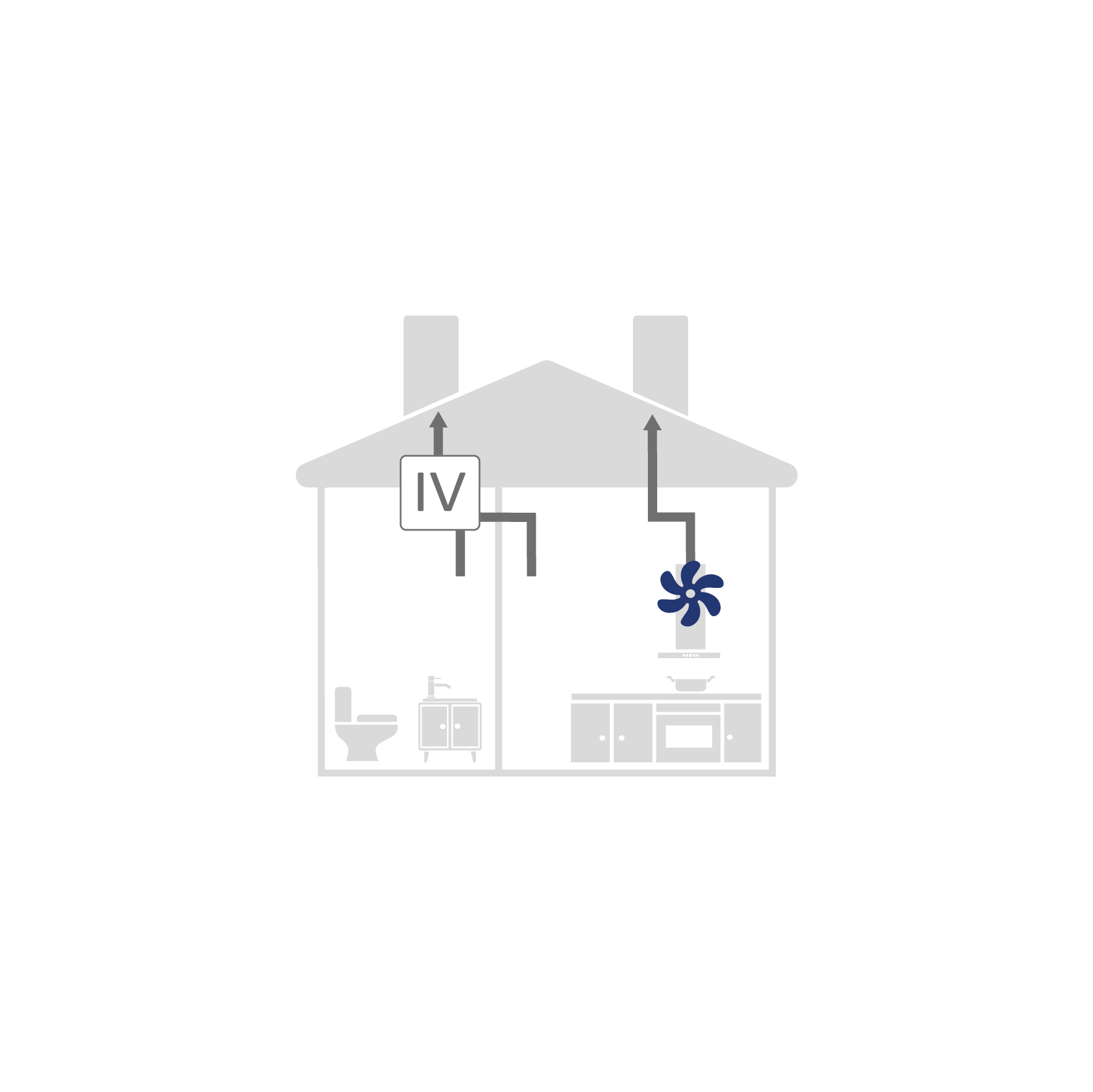 |
With its own motorThe kitchen has its own duct for the kitchen exhaust fan. Almost all kitchen hood models are available with own motor. |
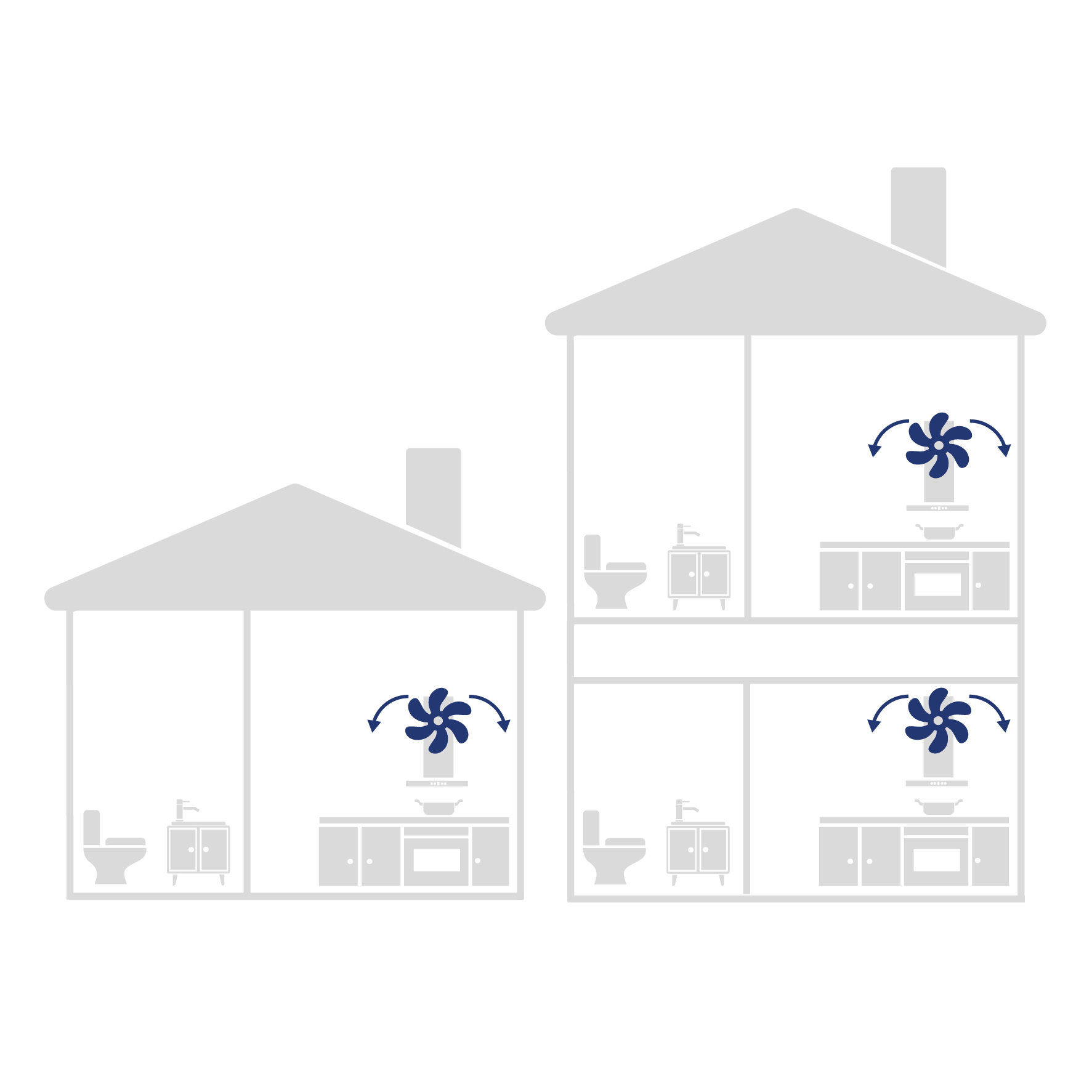 |
With its own motor + active carbon filterThe range hood has its own fan motor, which blows the carts back into the room through the active carbon filter in the range hood. The ventilation of the apartment is not controlled by the range hood. |
Control of the extractor fan
|
|
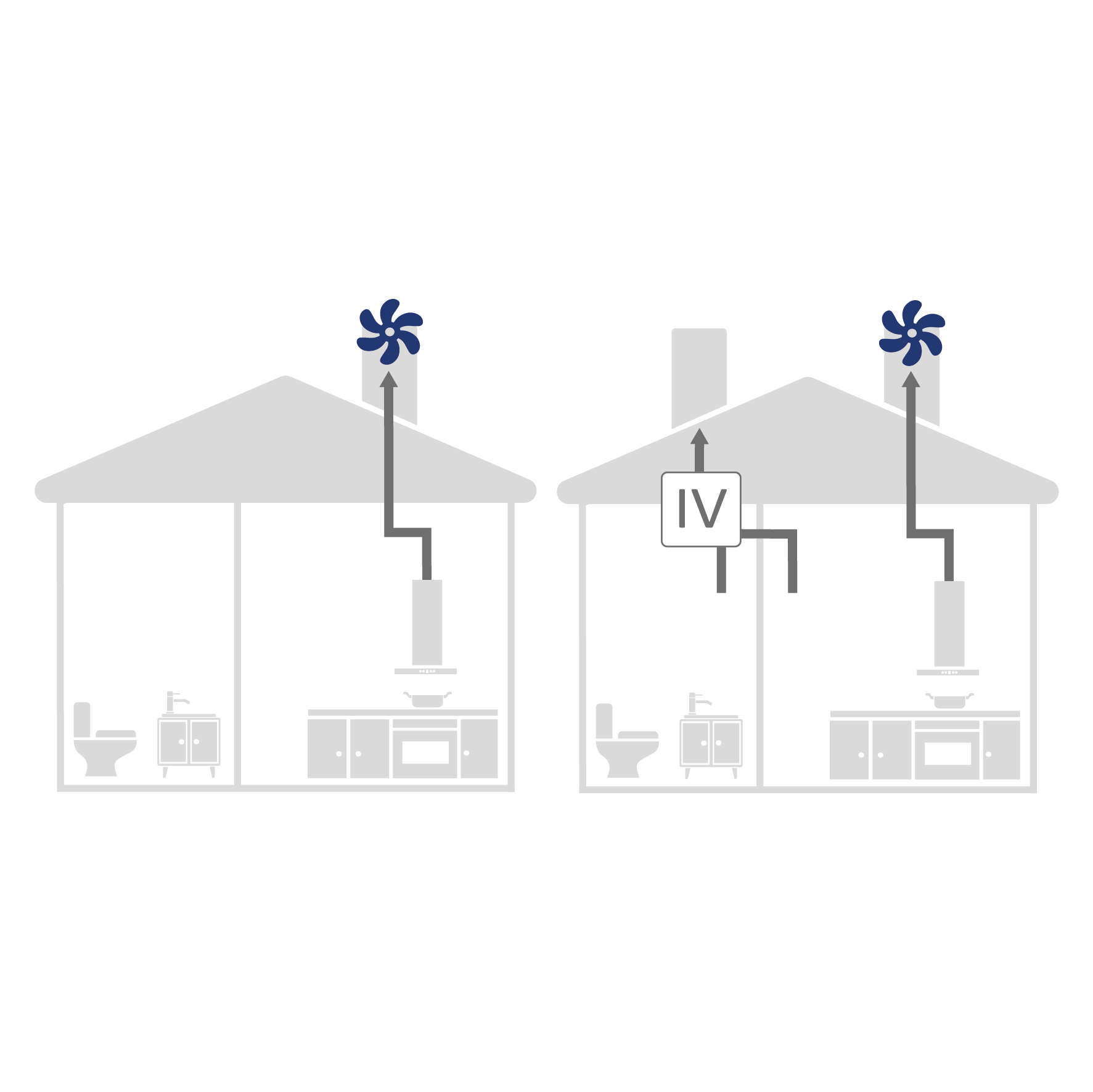 |
X1 - extractor fan with kitchen exhaustThis is usually a detached house or town house, where the kitchen fume extraction is done through its own extractor fan. The control device (cooker hood) does not have its own motor but has built-in control for the extractor, which is located at the end of the exhaust duct (usually on the roof of the house). Air is only removed through the kitchen hood, and the duct is only for one apartment. With Lapetek's X models, both traditional AC motors and energy-efficient EC motors can be controlled. The possible ventilation or LTO machine for basic ventilation in the building is not controlled from the kitchen control device (cooker hood), and the extractor hood should not be connected to the same duct as the ventilation or LTO machines. The suction power is determined by the selected extractor (its power), the supply of replacement air, and the resistance caused by the exhaust duct to the movement of air. |
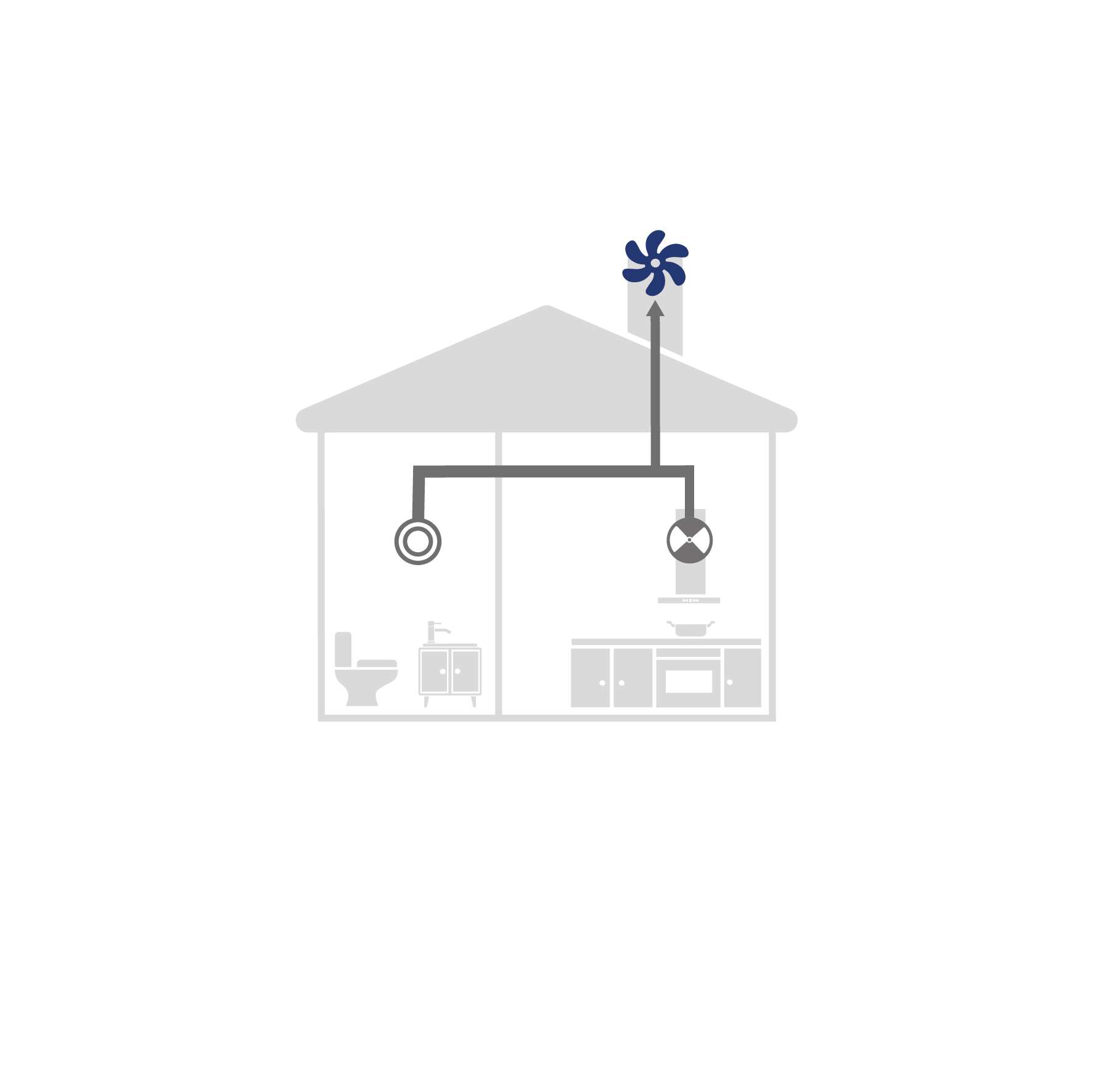 |
X2 - extractor fan with exhaust for kitchen and wet areasThis is usually a detached house or town house, where both kitchen fume extraction and basic ventilation occur through the same extractor fan. The control device (cooker hood) does not have its own motor but has control for the extractor. The extractor is located at the end of the exhaust duct (usually on the roof of the house). In addition to the kitchen hood, air is also removed through the exhaust vents in other rooms (bathroom, toilet, wardrobe). The extractor removes air only from one apartment. Ventilation in other rooms can be enhanced by a function that closes the kitchen shutter and simultaneously sets the extractor to full power. In this case, the suction is primarily directed to, for example, damp rooms. With Lapetek's X-models, both traditional AC motors and energy-efficient EC motors can be controlled. The possible ventilation or LTO machine for basic ventilation in the building is not controlled from the kitchen control device, and the cooker hood should not be connected to the same duct as the ventilation or LTO machines. The suction power is determined by the selected extractor fan (its power), the supply of replacement air, and the resistance caused by the exhaust duct to the movement of air. |
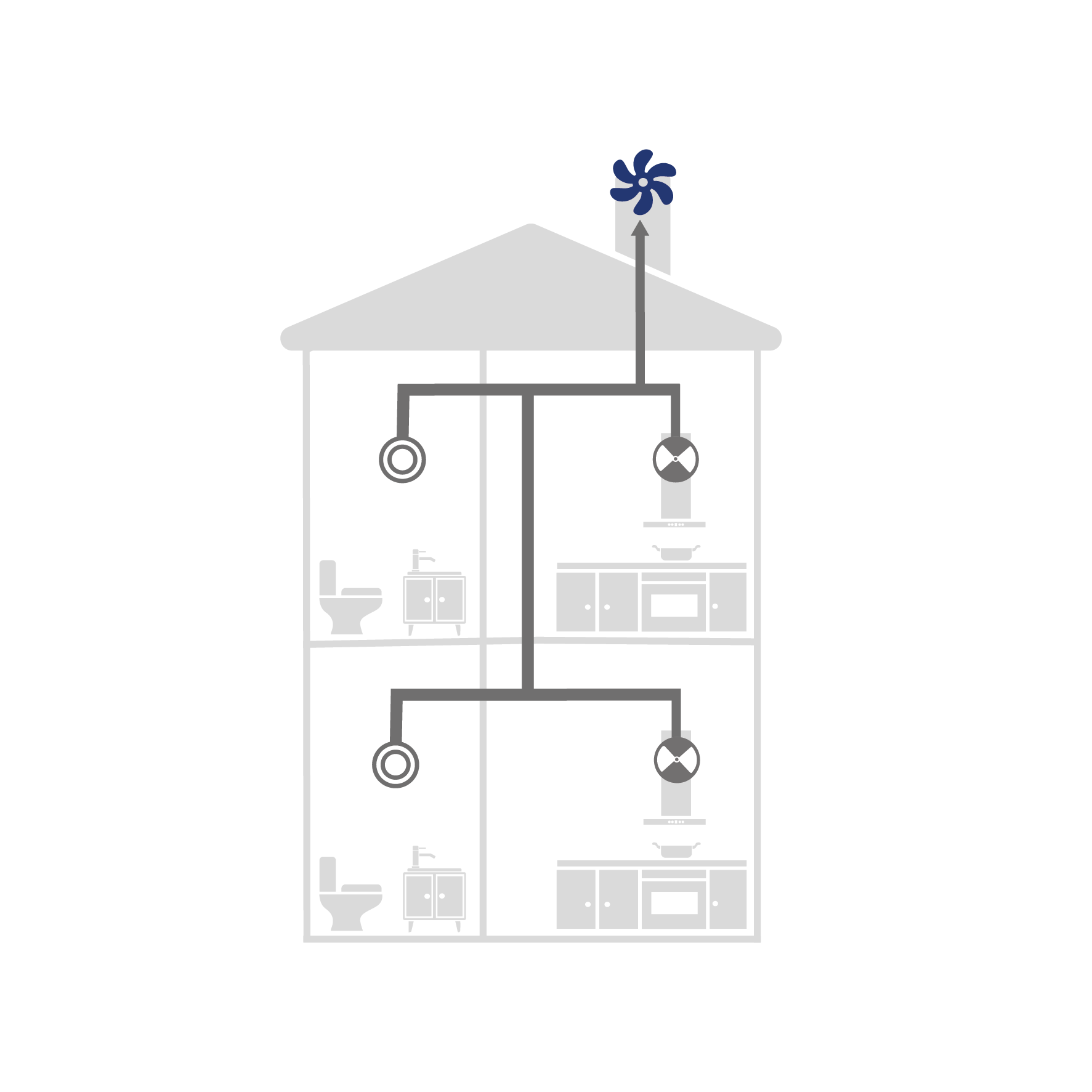 |
X3 - the control unit only has a shutterIt is usually an apartment building where all ventilation occurs either by gravity or through a shared extractor fan. In the control unit (hood), there is no separate motor; instead, it only opens and closes the shutter located within the control unit. The shutter is usually also timed, so it cannot be left open. There is no power supply to the extractor fan through the control unit (hood). NOTE! The suction power is determined by the selected extractor fan or natural ventilation. The building management determines the efficiency of air removal. It can either remain constant or be enhanced during specific times (e.g., 7-9 and 15-18). |
